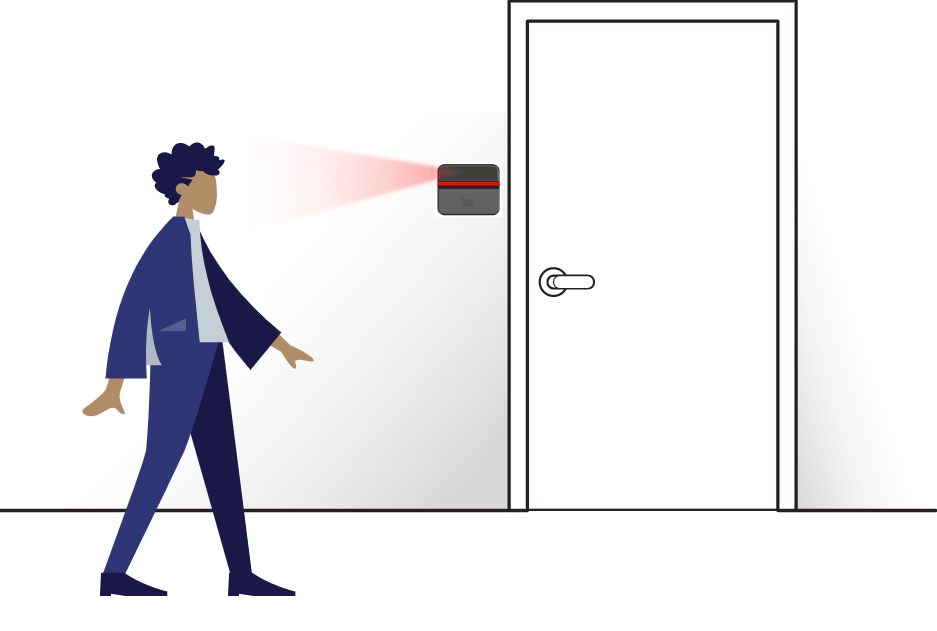Discovering the Function of Accessibility Control Systems in Enhancing Protection Equipment Efficiency and Performance
Accessibility control systems are increasingly recognized as necessary components in the landscape of security monitoring, providing a structured method to control access to sensitive areas and details. Their capability to incorporate with numerous safety and security technologies, such as surveillance video cameras and alarm systems, significantly improves the total performance and efficiency of protection procedures.
Understanding Gain Access To Control Equipment
Access control systems play an essential role in guaranteeing the protection of various environments, from company offices to delicate government facilities. These systems manage that can enter or exit an assigned location, therefore shielding assets and delicate info. The fundamental components of accessibility control systems include identification, verification, and authorization processes.
Identification entails verifying a person's identity, generally through qualifications such as key cards, biometric information, or passwords. When recognized, authentication verifies the individual's right to access, typically through multi-factor authentication approaches to boost protection. Permission figures out the level of access granted, allowing for distinguished consents based on functions within the organization.
Access control systems can be classified right into two main kinds: sensible and physical. Physical accessibility control pertains to concrete areas, while sensible accessibility control governs electronic details systems. Both types work synergistically to supply extensive protection solutions.
Integration With Security Technologies
The assimilation of gain access to control systems with other safety and security technologies is important for developing a holistic safety environment. By combining gain access to control with video clip monitoring, breach detection, and alarm, companies can boost their overall safety stance. This interconnected framework enables real-time monitoring and rapid action to safety and security events, improving situational understanding and functional effectiveness.
For example, incorporating access control with video clip monitoring makes it possible for protection personnel to confirm access events aesthetically, guaranteeing that only authorized people are provided entrance. Likewise, when access control systems are linked to security system, any kind of unapproved gain access to efforts can activate immediate alerts, prompting speedy action.
Furthermore, the combination of accessibility control with cybersecurity procedures is significantly essential in securing delicate data and physical possessions. By aligning physical safety procedures with IT security systems, organizations can guarantee that both digital and physical access factors are checked and controlled properly.
Advantages of Enhanced Safety Procedures

Moreover, enhanced security procedures help with real-time monitoring and incident feedback. With integrated systems that incorporate security cameras, alarms, and gain access to controls, safety teams can promptly identify and attend to possible risks. This positive click this link method allows for prompt interventions, reducing the possibility of security violations and prospective losses.
Furthermore, efficient safety and security operations contribute to a culture of security within the company. Staff members are likely to feel more secure when they know that robust measures are in location, bring about raised spirits and performance. In addition, the use of information analytics from gain access to control systems makes it possible for organizations to analyze security patterns, improve plans, and designate sources efficiently.
Obstacles and Factors To Consider

Additionally, companies must resolve the capacity for data breaches. Access control systems commonly take care of delicate info, and any vulnerabilities can subject this data to unauthorized accessibility. customized security solutions. Making sure durable cybersecurity measures is necessary to safeguard versus such risks
Individual training is an additional critical factor to consider. Employees have to understand how to utilize access control systems effectively, as inappropriate usage can cause protection spaces. Additionally, organizations have to stabilize safety with user convenience; excessively restrictive accessibility can prevent efficiency and bring about workarounds that jeopardize security methods.
Conformity with lawful and governing needs is also vital. Organizations needs to make certain that their accessibility control systems fulfill market requirements and regional legislations, which can vary significantly. Finally, the ongoing upkeep and administration of these systems require committed resources, making it critical for companies to allocate ideal spending plans and employees to make certain long-term performance and performance.

Future Trends in Access Control
Expecting the future of gain access to control reveals a landscape progressively shaped by technical innovations and progressing safety requirements. One substantial fad is the assimilation of fabricated knowledge (AI) and device learning, which boost decision-making capacities and automate hazard detection. These technologies enable real-time analysis of access patterns, making it possible for more flexible read and receptive protection actions.
Biometric verification is likewise gaining traction, with improvements in fingerprint, face read review recognition, and iris scanning modern technologies providing enhanced protection and customer comfort. As these systems come to be a lot more affordable and advanced, their fostering throughout different fields is expected to increase.
One more emerging pattern is the change in the direction of cloud-based access control systems. These services provide scalability, remote management, and centralized data storage space, enabling companies to enhance operations and improve performance.
Furthermore, the Internet of Points (IoT) is readied to revolutionize access control by allowing interconnected gadgets to connect and share information, therefore boosting situational awareness and security responsiveness.
Verdict
In conclusion, gain access to control systems considerably boost the effectiveness and performance of safety devices by helping with accurate recognition, verification, and permission procedures. While factors to consider and obstacles exist, the recurring advancement of gain access to control modern technologies guarantees to additional boost safety and security operations.
Access control systems are increasingly acknowledged as crucial components in the landscape of safety management, offering a structured method to control access to delicate areas and info. Physical accessibility control pertains to substantial locations, while rational access control governs digital details systems.The integration of access control systems with various other safety technologies is crucial for creating a holistic protection setting. Access control systems typically take care of sensitive info, and any type of susceptabilities might subject this information to unapproved gain access to. Companies need to balance security with customer convenience; overly limiting gain access to can prevent performance and lead to workarounds that endanger protection methods.